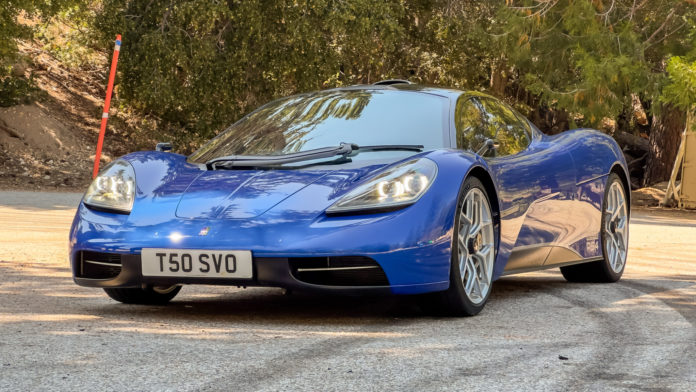This story is a weird one. To start, I’m not driving. I’m sitting to the left of three-time Indy 500 champ Dario Franchitti as he hustles the sleek blue GMA T.50 prototype through the mountains north of Los Angeles. Secondly, it’s about a car that isn’t technically road-legal, as all US-bound examples will cross the pond under the show or display exemption. And lastly, you can’t buy it. All 100 planned units, priced at around $3 million, sold within 48 hours of its unveiling.
Why bother, you ask? Well, the GMA T.50 is a weird car. Especially when you consider how crowded the seven-figure space has become with 2,000-horsepower electrics, all manner of resto-modded Porsche 911s, and whatever hyper futuristic thing Koenigsegg has managed to slap a license plate on. Compared to the shouting, boisterous machines that populate the scene, this small three-seater, built as the spiritual successor to the mythical McLaren F1 by industry-legend Gordon Murray, whispers.
The recipe that birthed the GMA T.50 reads as simple enough on paper, but it’s far from easy to pull off. We’re talking about a car the size of a Porsche Boxster that seats three and has a naturally aspirated V12 bolted to its back. A car defined by its tactility can easily be spoiled if it fails to nail the details. The T.50 has no electric motor to torque fill, much less torque vector or turbos to produce low-end shove. It moves through gears manually via a lever and clutch oh and, lest I forget, revs to a whopping 12,400 rpm.
I met Dario and the GMA team at a park just south of the canyons where the blue T.50 sat, doors up, as passers-by looked more than confused at its presence. After some quick introductions, I stuffed myself into the left seat, the right chair’s space slightly occupied by the shifter, and we set off. This particular example wore a sticker in its rear quarter that read “Pre-Series Prototype P54,” a point reinforced immediately when Dario said, “The A/C might be broken.” Thankfully, on this near 100-degree day, it wasn’t.
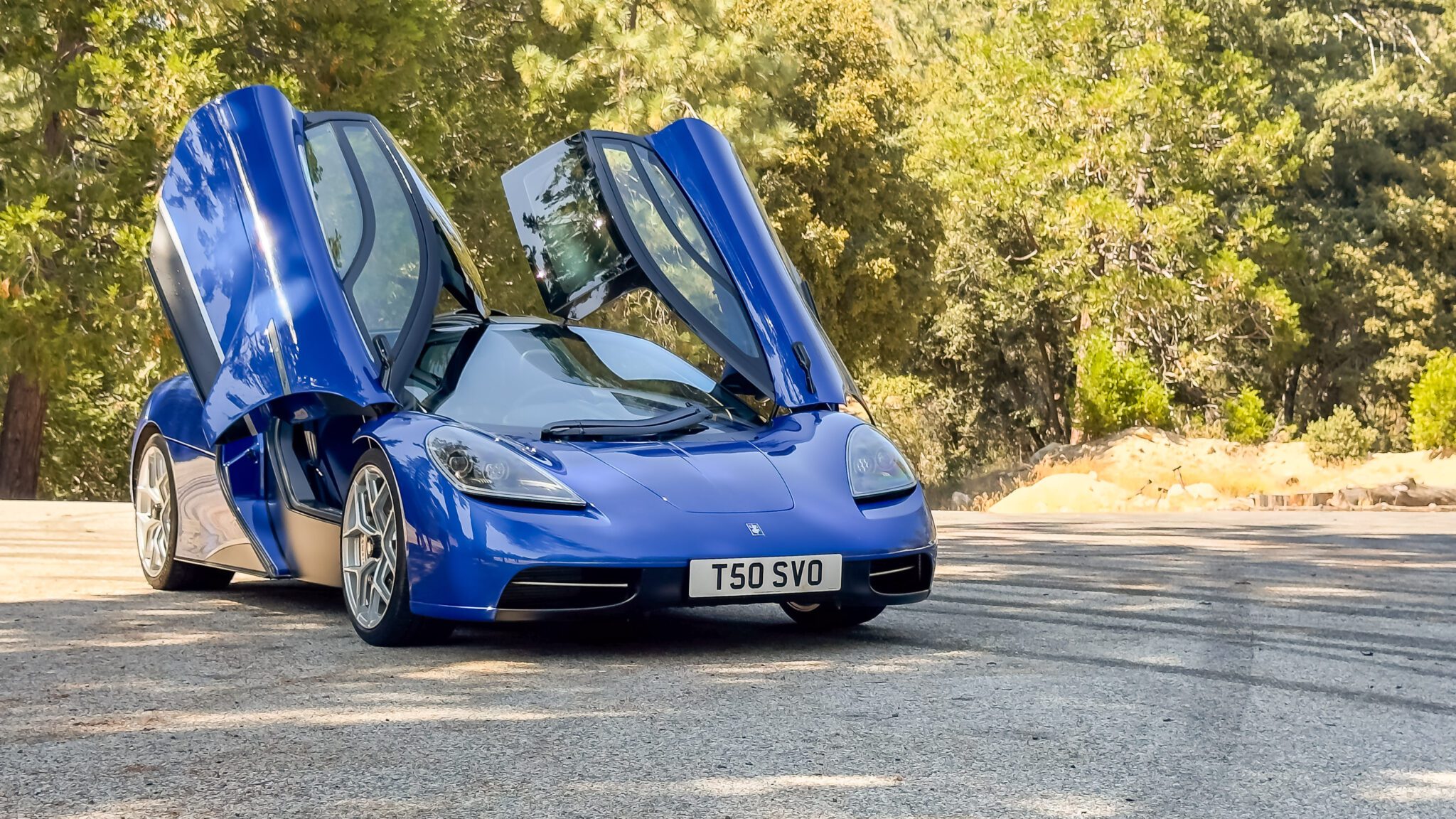
As we left Sunland, CA, behind, and the road began throwing twists at us, Dario jumped a few gears. He went into fifth despite us moving at a pedestrian pace. “I want to show you that this car has torque in any gear, at any speed.” That’s when he floored it, and the T.50’s 4.0-liter V12 delivered enough force to press us into the seats as its exhaust woke up with a low howl, all despite producing a minuscule by modern standards, 353 pound-feet of torque.
The horsepower figure, an impressive 661, becomes even more so when you consider this car’s 2,200-pound dry weight. Which is to say, this acceleration is a collaboration between its Cossworth-developed engine and GMA’s obsession with lightness. While the British carmaker doesn’t publicly quote a 0-60 time, we know it tops out at 226 mph.
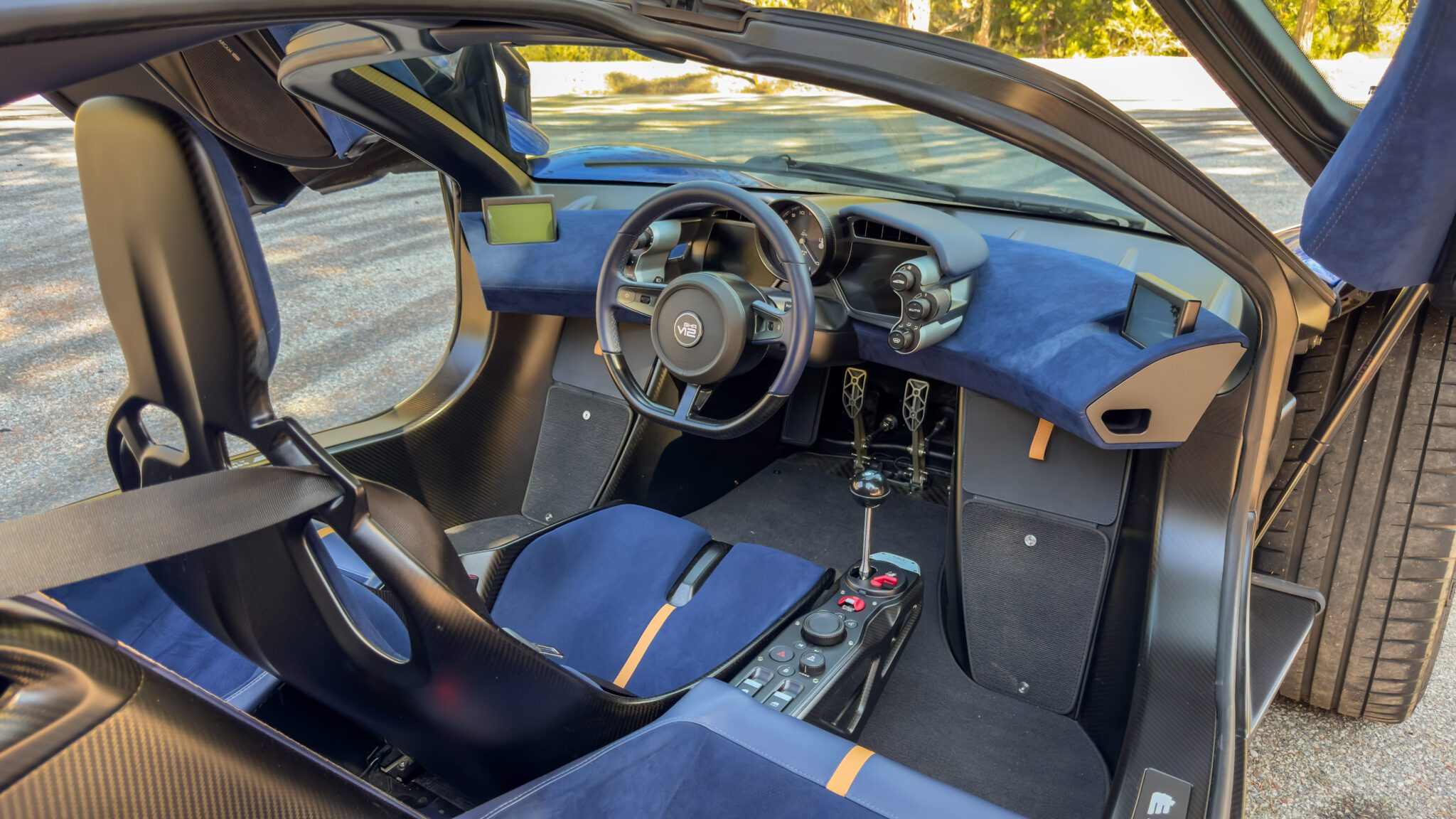
We pressed up the hill, the conversation inside the car straying away from the GMA T.50 and onto Dario’s personal car collection, our affinity for old 911s, and the effects of electrification on modern supercars. Dario, who joined Gordon Murray Automotive to aid the car’s development, shared how challenging dialing in such a tactile car can be. “The feeling of the steering, the shifter, it all has to be just right.” A point that’s doubly important for a new manufacturer charging $3 million a piece.
I watched as the bends came and went, the car’s nose changing direction rapidly. It moves through bends with the agility only a truly light machine can. No matter how far tire and suspension technology has come, nothing can replicate the feeling of a genuine featherweight. Despite hitting the odd rock or significant road imperfection, the GMA T.50 never crashed over them; its relatively soft passive dampers effortlessly absorbed them without issue. Yet again, its 2,200-pound dry weight pays dividends, circumventing the need for firm shocks.
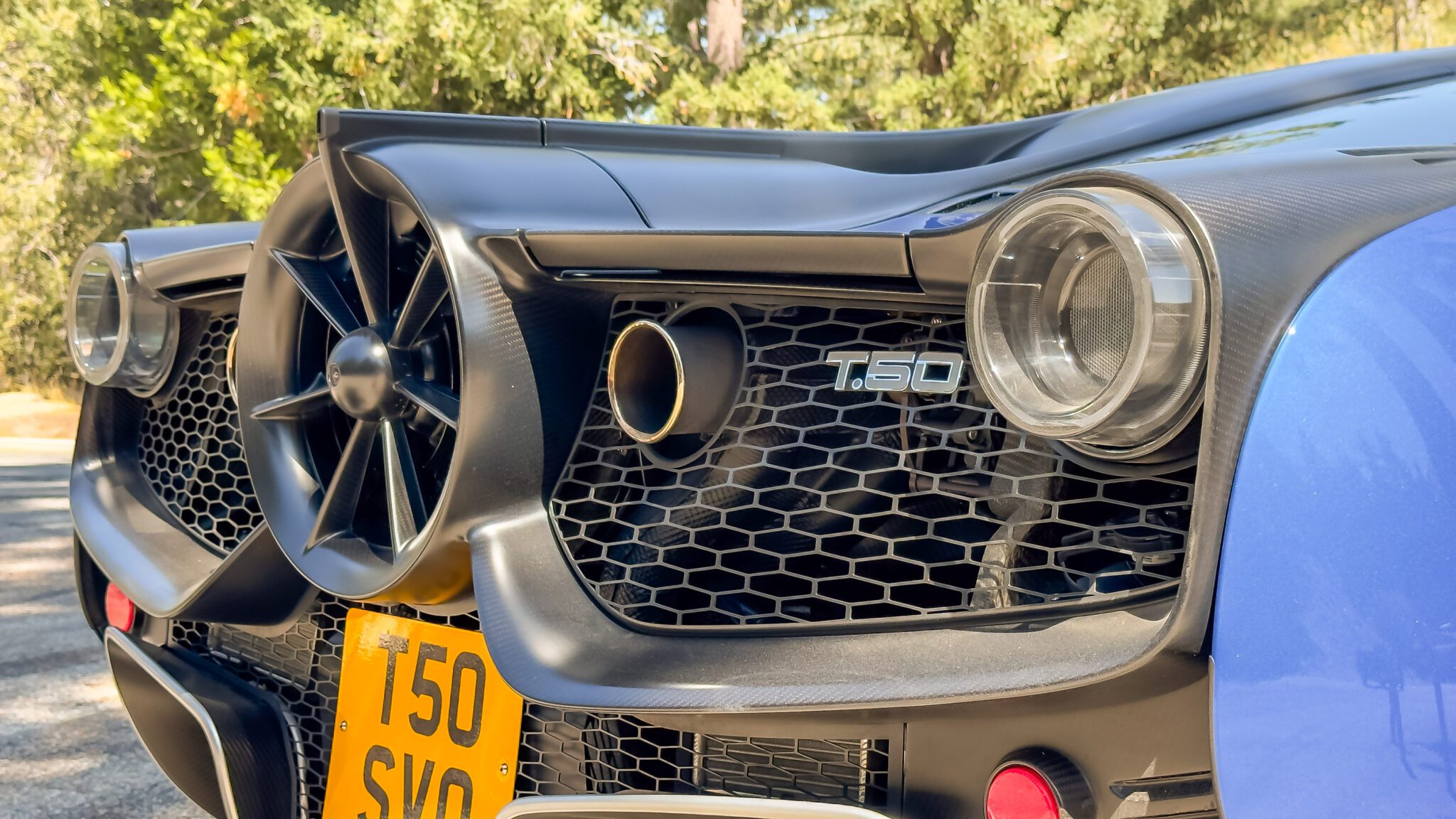
We reached the tunnel entrance as Dario said, “Here we go,” stepped down a few gears, and punched it. Even after the downshifts, the tach hovered around 6,000 rpm. We shot into the dark underpass, the central gauge reading nine, then 10, and eventually, 11. We breached the other side as the tach crested 12, and Dario stepped up a gear.
Those last few thousand revs completely changed the note emanating from its twin rear pipes. It morphs from a low-end growl to a full-on howl and, eventually, a glorious ear-piercing screech. More impressive, however, is the induction noise in the cabin, characterized by the T.50’s separate intake plenums. A sound not even the upcoming T.33 will replicate despite being powered by the same V12 on the count of employing a single plenum for both banks.
A switch to the left of the steering wheel controls the T.50’s party piece, its downforce-generating rear fan, which is adjustable between various modes. Its over 15-inch carbon fiber fan is powered by a 48-volt system capable of generating up to 30 percent extra downward pressure when needed. However, that was hardly the case on this afternoon canyon drive.
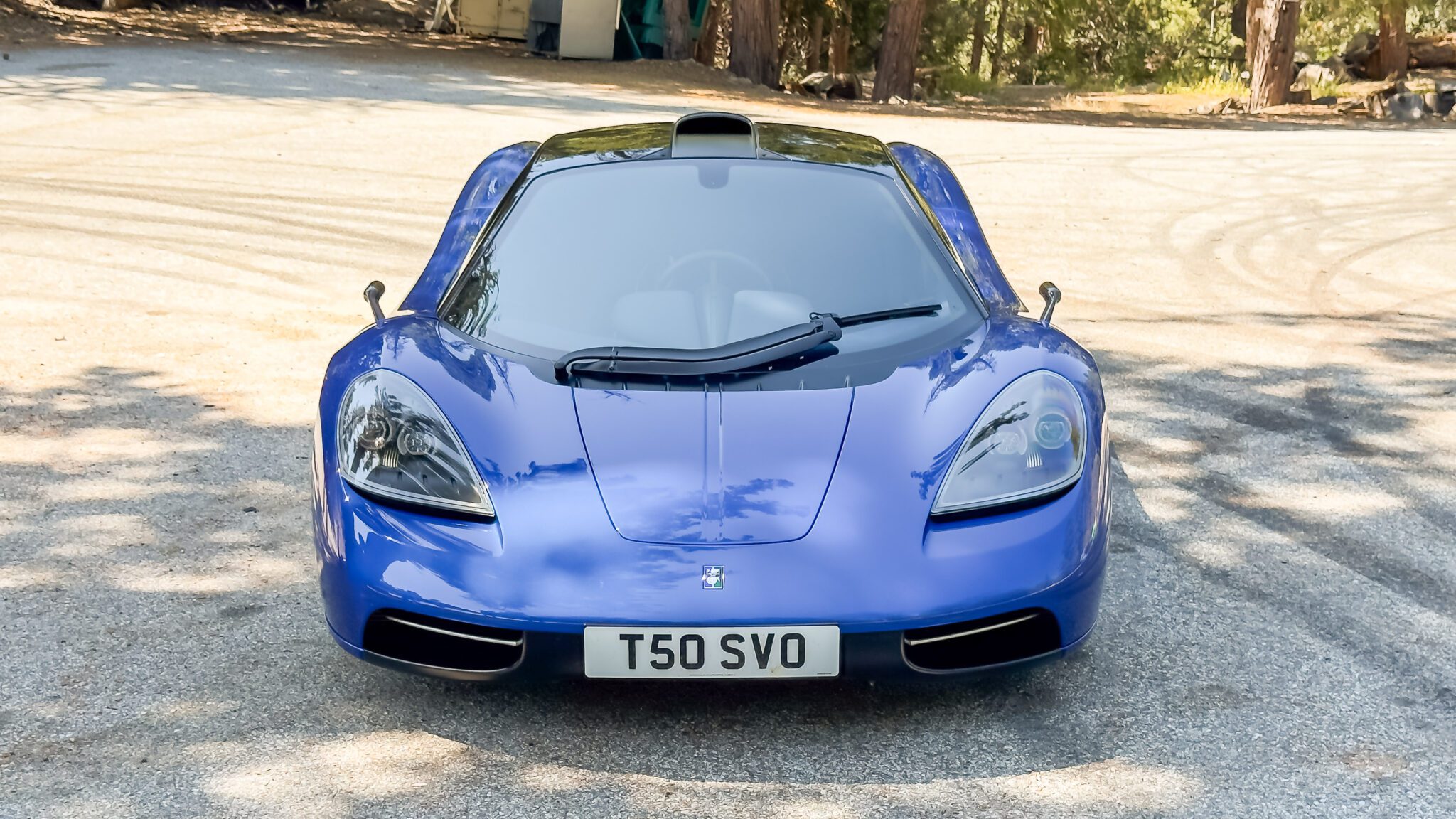
We reach the top of Angeles Crest Highway, stopping off at the iconic Newcomb’s Ranch to chat and give the car a chance to cool down. Dario tells me that around 25 of the planned 100 cars have been delivered, with around 40 percent of the total run coming to the US. Of that fraction, most of the cars will be making their way to collectors in California. While the GMA T.50 hasn’t been fully federalized, its successor, the T.33, will be, making it a massive deal for collectors on this side of the Atlantic.
GMA’s production strategy works twofold, ensuring the car’s rarity and the carmaker’s ability to get to know each of its customers. Given the low volume, it also allows the new brand to service cars more effectively. On this point, Dario spoke about GMA’s efforts to intentionally keep the T.50’s running costs low. For example, it rides on off-the-shelf Michelin Pilot Sport 4 S rubber and requires only basic servicing. The goal here is to keep the cars on the road more often and encourage their owners to drive them.
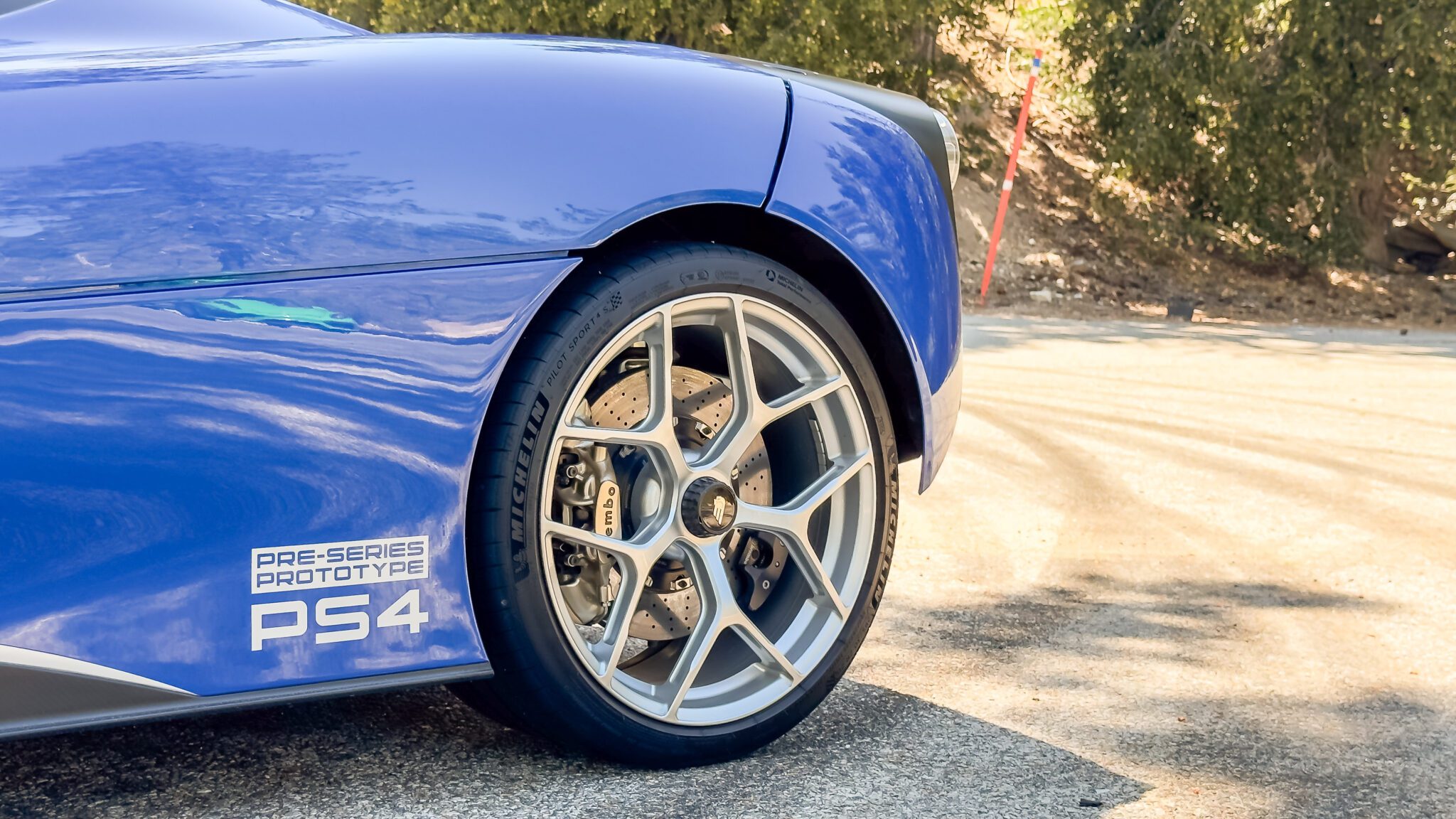
We hopped back in, continued the conversation, and calmly made our way back down the mountain. The whole drive lasted perhaps a few hours, but I couldn’t stop thinking about it in the days following and through Monterey Car Week. How foreign the T.50 felt amongst the latest metal, how light, how agile, and not to mention how evocative its high-revving V12 is. However, I wasn’t alone.
The same question resurfaced as I met with various carmakers throughout the week. “Should we bring back the manual transmission?” or “What do you think of this manual transmission trend?” My answer remained the same. “If you can do it, you should.”
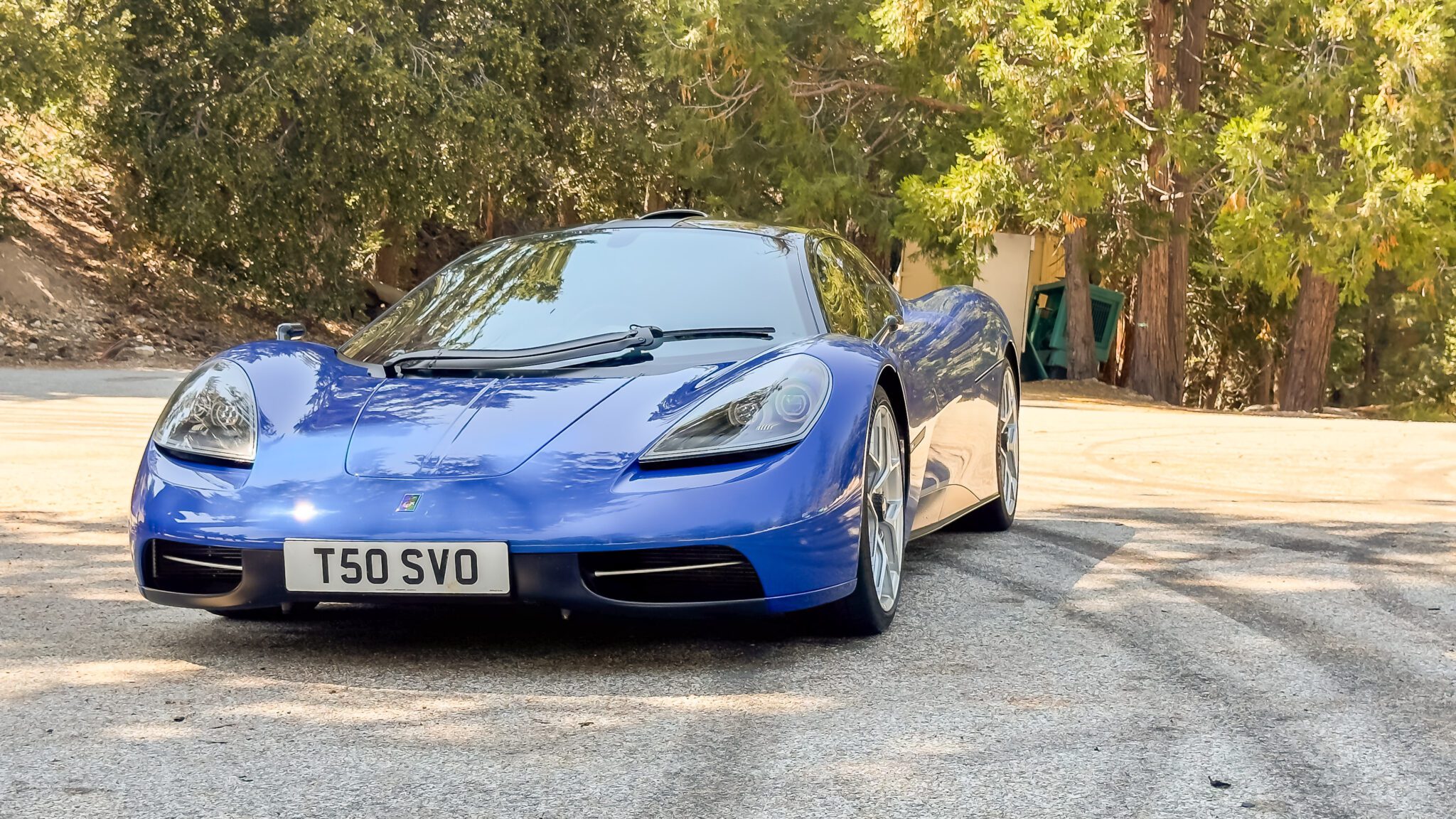
Regarding the super and hypercar space, the GMA T.50 stands as an anomaly. At least it did before last week. Whether it be the Lamborghini Temerario that exceeds 10,000 rpm, the Nilu 26 that blends a manual transmission and an NA V12, or the Bugatti Tourbillon and its high-revving brand-new V16, the industry is shifting. Even Pagani saw a 70 percent take rate for the manual option in the Utopia Coupe and Roadster.
The T.50’s arrival and subsequent sales success signaled a significant turning point for the space. When the people who can have anything want something tactile, naturally aspirated, and equipped with a manual, it’s representative that the outright pursuit of performance is no longer enough to drive appeal. As such, the T.50 wasn’t weird at all. It was just ahead of the curve.

